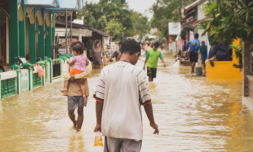The UN refugee agency regrettably states that the global population of forcibly displaced people has passed 100m for the first time. This ‘staggering milestone’ calls for urgent action to address the underlying causes.
Russia’s invasion of Ukraine has sealed it, at least 14m people have been pushed from their homes bringing the global total of forcibly displaced people to over 100m.
This marks the first time that this disconcerting number has been breached, and the UN refugee agency (UNHCR) is now calling for international action to address some of the root causes.
Following the grim announcement, officials are immediately pointing to the sheer number of ongoing conflicts – and their many respective human rights violations – as the key driver of this sudden influx of refugees, though there are others, of course.
‘One hundred million is a stark figure – sobering and alarming in equal measure,’ said Filippo Grandi, the UN high commissioner for refugees.
He’s not wrong either. This unwanted record represents roughly 1% of the entire global population and is equivalent to the world’s 14th most populous countries, including Egypt.
According to the UNHCR, the number of displaced people rose to around 90m in 2021, largely propelled by waves of violence in nations like Ethiopia, Burkina Faso, Myanmar, Nigeria, Afghanistan, Somalia, and the Democratic Republic of Congo.
The recorded 14m internal displacements in this time represented a 50% increase on the previous year, suggesting inter-regional hostility is becoming a more sizable issue over time.




















